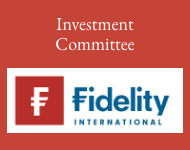AS the ESG-labelled bond market grows, so it provides both more choice and liquidity and that offers opportunity for investors, says Stuart Chilvers, fund manager, Greenbank Global Sustainable Bond.

As we move into the second half of a year in which nearly half the world’s population go to the polls, we’ve seen two very different market reactions to two very different elections in recent weeks.
The UK bond market’s response to the British election was little more than a gentle shrug of the shoulders. But then that’s not overly surprising, given the results were largely in line with expectations. And the incoming government is committed to fiscal orthodoxy and retains its predecessor’s spending rules that limit the scope to borrow. Meanwhile, the surprise announcement of legislative elections in France following European elections sparked significant volatility in both French government bonds and credit spreads of French companies (particularly banks).
Those credit spread moves have largely retraced following the final results of both rounds of voting. Yet that initial upheaval was the first period of real credit spread weakness that we’ve seen this year. That’s in stark contrast to the volatility in all government bond markets throughout the year (and which is still ongoing). As the risk of a severe recession receded as 2024 progressed, spreads have generally tightened. With government bond yields higher, investors are being compensated with historically attractive yields for holding corporate bonds, despite lower extra returns above treasuries.
Transatlantic split on ESG bonds
This has also been a fruitful environment for issuers. The combination of companies accepting that yields are likely to be higher for longer, tighter credit spreads (which means better financing deals for borrowers) and strong demand from investors has produced much higher global bond issuance for the first half of the year than expected. Part of this was $568 billion of Environmental, Social and Governance (ESG) labelled debt. If that continues at the same pace, that puts the market on track for over $1 trillion of ESG-labelled debt issuance in 2024. If so, that would be only the second time that has happened in history (2021 was the first).
There are several types of ESG-labelled bonds: ‘green’ is exclusively for financing environmental improvements; ‘social’ is exclusively for funding projects that improve society or alleviate a problem such as poverty or illiteracy; ‘sustainability’ is a mixture of both social and green projects; and ‘sustainability-linked’ is where the bond’s coupon is linked to specific targets, whether contributing to hitting a UN Sustainable Development Goal or reducing emissions by a certain amount.
While most of this ESG-labelled debt issuance was from supranationals, national and local governments and agencies, $181bn was corporate debt. Now, while that’s a 5% drop on a year ago, there’s a notable transatlantic divide at play. In Europe, €117bn ($127bn) of ESG debt has been issued which is the highest year-to-date figure on record. On the other hand, US corporate ESG issuance hasn’t kept up with the record issuance in the broader US credit market. For instance, in the second quarter of 2024 investment grade ESG-labelled issuance fell 7% compared with the same period in 2023, while the broader investment grade market’s issuance increased 23% over the same period. Note that this is after double-digit declines in both 2022 and 2023 as interest rates were rising rapidly. This suggests that, despite the pick-up in issuance generally, US companies are not overly eager to return to the ESG market.
On a more positive note for ESG-labelled bonds, this growth in European ESG-labelled issuance from companies is accompanied by a continued broadening out of the sectors getting involved. While financials and utilities are still the largest issuers of green bonds, there’s greater take-up from industrials, real estate and technology, media and entertainment. There’s also a fairly broad spread of issuance across maturities (with a pick-up in longer-dated issuance), as well as across credit ratings within investment grade debt. This creates more liquidity and offers more choice for investors.
We believe the long-term future is bright for ESG-labelled debt. We have seen more issuers enter the market for the first time this year (from large countries to small corporates) and expect this to continue. As should the broadening in terms of the sector mixes we see. Given the number of projects that need to be financed for a just transition to take place, we believe the space will continue to grow. Meanwhile, innovation through the use of more unusual structures should offer yet more choice and helpful incentivising tools for encouraging cleaner and more efficient business practices.
On the other side of the equation, there’s nothing to suggest that demand for these assets will wane, with deals on the whole significantly oversubscribed through the year. As the ESG-labelled market matures, it is becoming more liquid and more varied, offering more choice and better options for investors and issuers alike.
Main image: jacopo-maia-gOUx23DNks-unsplas































